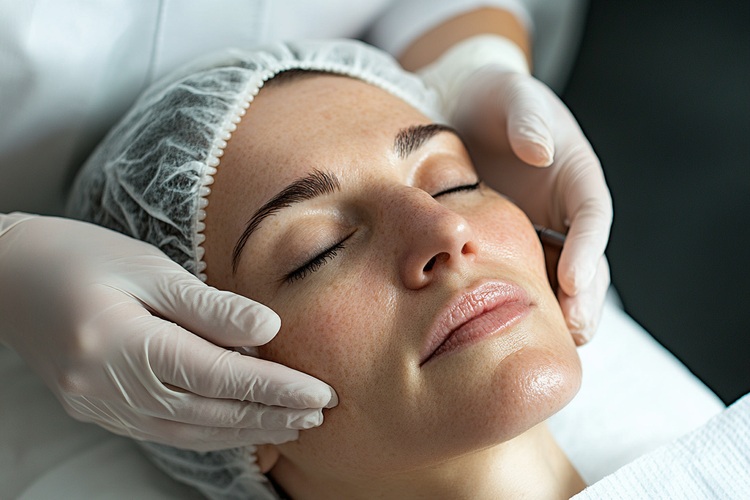Laser Treatments for Acne, Melasma and Rosacea Explained
Modern laser technology has revolutionized the treatment of common skin conditions, offering targeted solutions for issues that once seemed difficult to manage. From stubborn acne scars to persistent melasma and the redness of rosacea, laser treatments provide scientifically-backed approaches to clearer, healthier skin. Understanding how these treatments work, what results to expect, and which options suit different skin types can help you make informed decisions about your skincare journey.

Laser treatments have become increasingly sophisticated in addressing specific skin concerns, with different wavelengths and technologies designed to target various conditions. For those struggling with acne, melasma, or rosacea, understanding the science behind these treatments and their potential outcomes is essential before beginning any procedure.
How Do Different Laser Types Address Acne Concerns
Acne treatment with lasers typically focuses on two approaches: reducing active breakouts and improving the appearance of scarring. Fractional lasers create microscopic treatment zones in the skin, stimulating collagen production and helping to smooth out depressed acne scars. Pulsed dye lasers target the blood vessels that contribute to inflammatory acne, reducing redness and helping to prevent future breakouts. Blue light therapy specifically targets the bacteria responsible for acne formation, offering a non-invasive option for those with active breakouts. Treatment protocols usually involve multiple sessions spaced several weeks apart, with visible improvements appearing gradually over several months as the skin heals and regenerates.
What Makes CO2 Laser Resurfacing Effective for Rejuvenation
CO2 laser resurfacing represents one of the most powerful options for comprehensive skin rejuvenation. This treatment removes the outer layers of damaged skin while heating the underlying layers to stimulate collagen production. The procedure addresses multiple concerns simultaneously, including fine lines, wrinkles, sun damage, uneven texture, and certain types of scarring. The ablative nature of CO2 lasers means they create controlled injury to the skin, triggering the body’s natural healing response. Recovery typically requires one to two weeks of downtime, during which the skin goes through phases of redness, peeling, and gradual healing. Results can be dramatic, with improvements continuing to develop for several months as new collagen forms and skin texture refines.
Can Laser Treatments Successfully Target Melasma Patches
Melasma presents unique challenges for laser treatment due to its tendency to worsen with heat and inflammation. Low-energy Q-switched lasers and picosecond lasers have shown promise in treating melasma by targeting the excess pigment without generating excessive heat. These treatments work by breaking down melanin deposits into smaller particles that the body can naturally eliminate. Treatment requires a conservative approach with lower energy settings to avoid triggering additional pigmentation. Sessions are typically spaced four to six weeks apart, and results develop gradually. Combining laser treatment with topical lightening agents and strict sun protection significantly improves outcomes. Patients with melasma should seek practitioners experienced in treating pigmentation disorders, as improper treatment can worsen the condition.
How Long Do Results Last Across Different Treatment Types
The longevity of facial rejuvenation varies greatly depending on the treatment, ranging from a few months for injectables to a decade or more for surgical facelifts. Laser treatments fall somewhere in the middle of this spectrum. Ablative procedures like CO2 laser resurfacing can provide results lasting five to ten years, though natural aging continues. Less aggressive treatments such as IPL or mild fractional lasers may require annual maintenance sessions to sustain improvements. Acne treatments often need periodic touch-ups to manage new breakouts, while melasma frequently requires ongoing maintenance due to its chronic nature. Lifestyle factors significantly impact longevity, with sun protection, skincare routines, and overall health playing crucial roles in maintaining results. Most practitioners recommend follow-up treatments at intervals tailored to individual skin response and aging patterns.
Which Laser Options Work Best for Rosacea Symptoms
Rosacea-related redness and visible blood vessels respond well to vascular lasers that target hemoglobin in blood vessels. Pulsed dye lasers and intense pulsed light systems selectively heat and collapse the dilated blood vessels responsible for facial redness without damaging surrounding tissue. Treatments typically cause temporary purpling or bruising that resolves within a week. Most patients require three to five sessions spaced four to six weeks apart to achieve optimal reduction in redness. The procedure also helps reduce flushing episodes and can improve skin texture affected by rosacea. While laser treatment effectively manages visible symptoms, it does not cure the underlying condition, and patients may need maintenance treatments every one to two years. Combining laser therapy with appropriate skincare and trigger avoidance provides the most comprehensive management approach.
What Should You Know About Laser Safety Across Skin Tones
The leading laser facial destination for all skin tones offers solutions for skin concerns including acne, melasma and rosacea by carefully selecting appropriate technologies. Historically, certain lasers posed risks for darker skin tones due to melanin absorption causing burns or hyperpigmentation. Modern advances have introduced safer options, including Nd:YAG lasers and carefully calibrated fractional devices that can treat a broader range of skin types. Practitioners must adjust settings based on skin tone, using lower energies and longer wavelengths for darker complexions. A thorough consultation should include assessment using the Fitzpatrick scale, test spots on inconspicuous areas, and discussion of realistic expectations. Patients with darker skin should specifically seek providers experienced in treating diverse skin tones, as technique and technology selection significantly impact safety and results.
Laser treatments offer scientifically-supported solutions for acne, melasma, and rosacea, with technologies continuously evolving to provide safer and more effective options. Success depends on choosing the appropriate treatment for your specific condition, selecting an experienced practitioner, and maintaining realistic expectations about results and recovery. Proper pre-treatment preparation and post-treatment care significantly influence outcomes, making patient education and compliance essential components of any laser therapy protocol.




